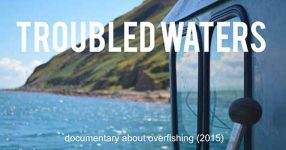“The Black Tears of the Sea: the Lethal Legacy of Wrecks” unveils a hidden danger lurking beneath the world’s oceans, unbeknownst to many. The threat is embodied in the rusting wrecks of ships from past conflicts, ticking time bombs that jeopardize marine ecosystems. Only a select few global experts are aware of this peril, and the film takes viewers on a journey with a dedicated team from the Marine Institute of Gdansk as they investigate the lethal legacy of wrecks.
Exploring the Bay of Gdansk: A Disturbing Discovery
The documentary begins with the Marine Institute’s expert team, led by former Polish Navy commander Benedykt Hac, embarking on the research ship IMOR. Their destination is the Bay of Gdansk, just half an hour from the Baltic port of Gdynia, where in 1999, a shocking revelation was made. The crew unveils the wreckage of the German hospital ship Stuttgart, sunk in 1943 during World War II. What follows is a meticulous examination of the site, raising concerns about the environmental impact, particularly the alarming presence of “the black tears of the sea” – viscous drops of oil oozing from the wreck.
Unveiling the Wrecks’ Hidden Menace
As the documentary progresses, it delves into the broader issue of wrecks from the Second World War and their potential ecological threats. Researchers, including Benedykt Hac, raise questions about the environmental impact of these sunken vessels, holding vast amounts of oil. The film introduces Dagmar Schmidt Etkin’s study, revealing that these wrecks could still contain up to 15 million tons of oil, a staggering 400 times more than the infamous Exxon Valdez oil spill in 1989. The focus shifts to the need for comprehensive research and global collaboration to address this largely overlooked menace.
The documentary sheds light on the lack of proactive measures by governments to address the imminent threat posed by the wrecks. Despite the findings and warnings from researchers, governments, including the United States, seem reluctant to take decisive action. The film underscores the potential catastrophic consequences if these wrecks are not dealt with promptly. The reluctance to invest in salvage operations and the subsequent playing for time raise critical questions about the priorities and responsibilities of nations in safeguarding their marine environments.
Confronting the Ecological Catastrophe
Returning to the Bay of Gdansk, the documentary intensifies its focus on the ecological catastrophe unfolding. Researchers, armed with damning evidence collected from seabed samples, expose the severity of pollution. The chemical analysis reveals alarming levels of cancer-causing substances in the seabed, exceeding environmental thresholds by over a thousandfold. The film captures the urgency in Benedykt Hac’s efforts to persuade authorities to tackle the contaminated seabed, emphasizing the far-reaching consequences on marine life and human health.
Expanding its scope, the documentary explores wrecks beyond the Bay of Gdansk, highlighting the global ramifications of this issue. The marine researchers at NOAA (National Oceanic and Atmospheric Administration) express growing concern about their limited knowledge regarding sunken ships from the Second World War. The film emphasizes the need for international cooperation, comprehensive data collection, and a sense of urgency to address the looming environmental disaster.
Seeking Solutions and Accountability
The documentary turns to the scientific endeavors undertaken to assess the condition of wrecks and identify potential risks. Researchers at NOAA employ advanced technology, including underwater robots and laser precision measurements, to evaluate the environmental impact of sunken ships. The importance of monitoring and categorizing wrecks based on their risk levels becomes apparent, highlighting the need for a proactive approach to safeguarding marine environments.
As the film progresses, it delves into the complex legal and financial challenges associated with addressing the wrecks’ environmental threats. Questions of liability, especially in the context of martial law during armed conflicts, emerge as significant hurdles. The documentary raises concerns about the financial implications of salvage operations and the pressing need for a resolution that ensures both environmental protection and international accountability.
Balancing Act for the Future
“The Black Tears of the Sea: the Lethal Legacy of Wrecks” presents a compelling narrative that underscores the urgent need for global action to address the environmental threats posed by sunken ships from the Second World War. The film leaves viewers contemplating the delicate balance between environmental conservation and pragmatic solutions, urging nations to collaborate in safeguarding the world’s oceans for future generations. As the documentary comes to a close, it prompts reflection on the responsibility each nation bears in confronting the hidden menace beneath the waves.












